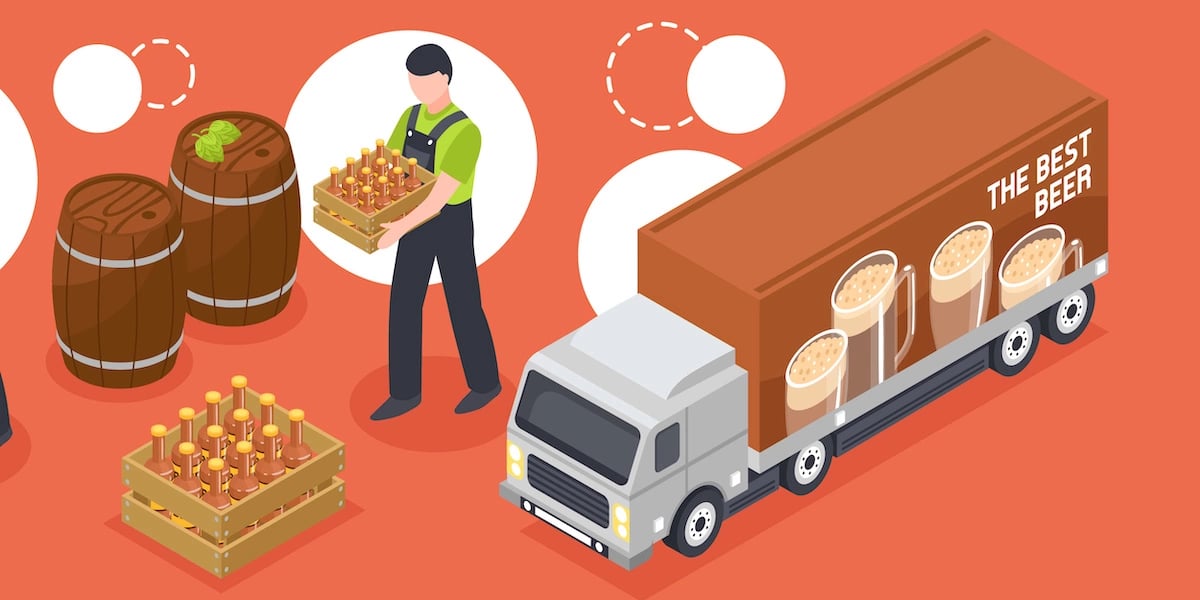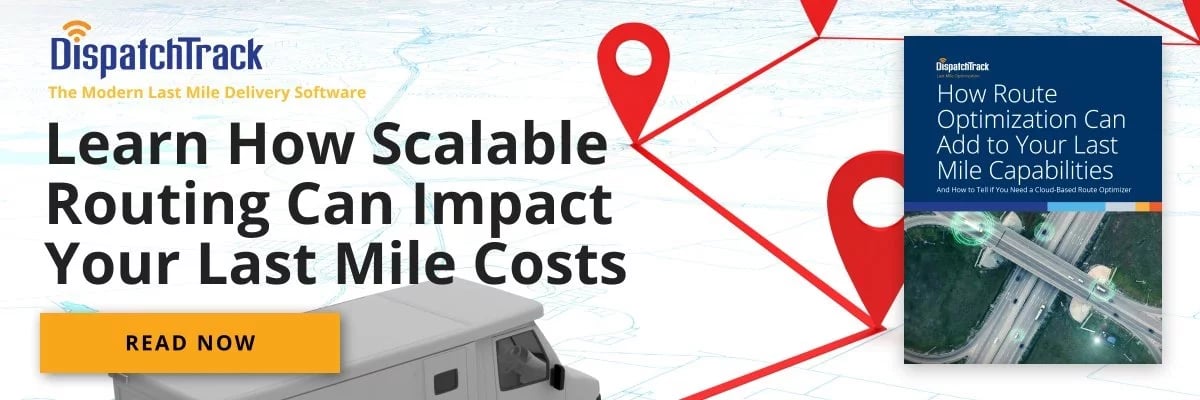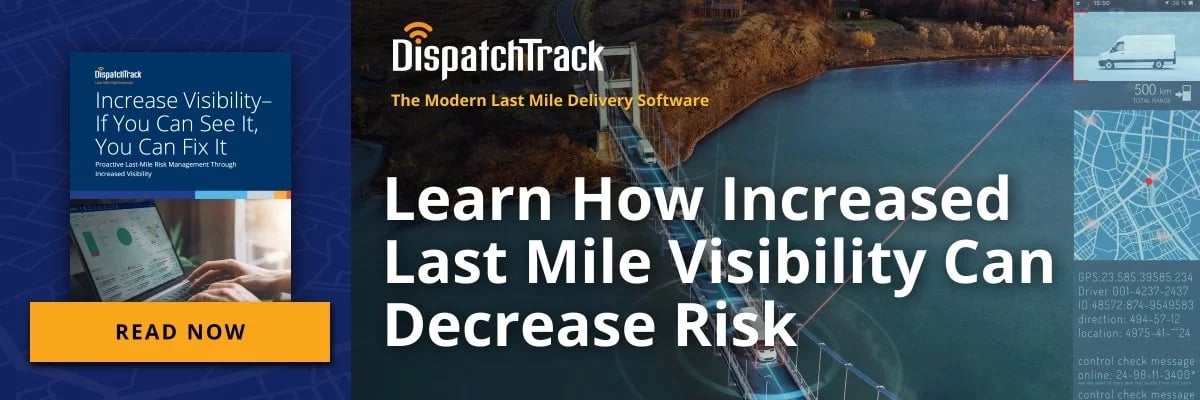Sometimes, it seems like the entire logistics technology sector is focused on nothing but the e-commerce boom. Startups are constantly finding new and innovative ways to optimize, track, and analyze order fulfillment, while the beer technology landscape seems to stay stubbornly inert.

There are a few potential reasons for this: major beverage delivery software vendors like Roadnet and Greenmile have been through the ringer of acquisitions and pivots, which has left some folks feeling like the existing technology landscape isn’t responsive to their needs. At the same time, the complexity of distribution workflows that require you to prioritize customers in different tiers without losing efficiency makes many newer solutions less than workable.
Luckily, the reality is a lot sunnier than we’re making it seem. For beer distribution outfits that take the time to scope their delivery management and route optimization technology options, there are solutions out there that can transform your delivery operations and power up your enterprise technology stack. The trick is knowing what to look for.
Technology Innovation
Like we mentioned above, the beer distribution technology landscape can seem a little stagnant. But dig beneath the surface, and you can find solutions that are truly agile and quick to adapt to changing needs when it comes to routing, dispatching, and tracking.
How do you suss out the innovative solutions? First, look for SaaS technology—this ensures that you’re getting something future-proof that can be updated quickly and easily as enhancements and improvements down the pike. Those enhancements should come at a regular clip, and your vendor should be committed to building out new features and functionality to continually improve your capabilities. Here, it can also be helpful to look into who actually owns the vendor’s IP, i.e. how much freedom they have to innovate with what’s already there.
Customer Experience Management
The focus of the day may be more on B2C than B2B when it comes to last mile technology—but there are plenty of concepts that are getting big play in B2C technology that are actually fairly crucial for beer distribution and similar industries. Your top tier customers want the same drivers to show up with roughly the same pallets at the same times every week (barring special occasions where you might have to up the delivery frequency), which is mostly a matter of routing—but they also want visibility into those deliveries, clear communication, and the ability to communicate changes in volume with you quickly and easily.
This is a matter of two things: real-time last mile visibility and automated customer communication/order tracking tools. If you can find a delivery management solution with built-in functionality that enables your clients to get real-time alerts and communicate last-minute requests without creating havoc, you can keep customers happy even in the face of the unexpected. This is especially important in the context of the driver shortage, which is seriously threatening everyone’s ability to deliver on time with any consistency.
Hybrid Routing
Again, it often seems like route optimization technology vendors just aren’t prepared to deal with the routing complexities that come with the beer industry. Beer distributors need to be able to slot their top tier customers into their request windows each week without losing out on flexibility and efficiency. Static route plans make it difficult to achieve either of these things—all it takes is one cancellation or a big swing in the number of kegs somebody wants and the whole plan starts to fall apart. These kinds of plans require a ton of manual maintenance, which means that your dispatchers and routers are spending time on tasks that, frankly, their beverage distributor software should be able to do for them.
The reverse side of the coin is that dynamic routing, for all the hype it gets, isn’t well-suited to recurring orders. If you route all your stops each week dynamically, you wind up constantly reinventing the wheel. The effect here is that with all the parameters that have to be considered—from driver affinity to time window requirements to hours of service to PTO and holiday schedules—your routes begin to lose efficiency or they have to be massaged into something that makes sense by hand.
The solution to this conundrum? Hybrid routing.
If you can find a vendor that offers you a hybrid of static and dynamic route optimization, you can get the best of both worlds: all the stability that comes from static routes with the flexibility that comes with dynamic routing. In practice, this might look like a separate planning module where you create weekly templates (i.e. with a skeleton route that hits your top customers with their preferred drivers) that are then imported into a dynamic route optimization portal. Once the template has been imported, you can start to reap the benefits of dynamic routing (agility, flexibility, etc.) without risking the predictability of the static plan.

Operational Efficiency and Cost Optimization
Innovation, customer experience, hybrid routing—at the end of the day, they all need to be pointed towards the same goal: making your delivery operations more efficient, no matter the scale. Grocery, big liquor, convenience stores, and on-premise drinking establishments of all sizes have different requirements and needs, all of which adds up to serious complexity. Your technology needs to help you find efficiencies, find ways to stretch your capacity, and offer top notch service to your most important accounts.
All of this comes down to finding a vendor with a holistic last mile approach that’s tailored to the beer industry. When your delivery management software integrates seamlessly with the rest of your software stack and offers a robust, responsive set of features, there’s a lot you can do to cut through complexity and find new efficiencies. There are a few different ways a cloud-based last mile optimization platform might make this happen:
- With an emphasis on connectivity between dispatchers, drivers, and other touchpoints throughout your company (inventory, sales, etc.), you can achieve true last mile visibility. In this way, you can make last minute adjustments to reflect changing volumes, you can more proactively manage delivery exceptions, and you can even send route sales reps to meet drivers at their delivery points to bolster the customer experience.
- With the right tools, you can create pre-planned seasonal load distributions for Thanksgiving, St. Patrick’s Day, and other events and holidays—then swap those plans in with a single click. You might use that same functionality to run what-if scenarios to model the effects of expanding your beer delivery operations to new accounts or geographies.
- With robust, customizable reporting functionality (built on successful integrations with the rest of your enterprise IT), you can create even more visibility cross-functionally and make data-driven decisions about how to maximize profitable deliveries.
True Technology Partnership
The beer distribution industry is fairly unique—which means it requires solutions that can be configured to meet unique needs. At the same time, you need functionality that was built out with beverage distribution in mind. This can make for a tough balancing act, but it’s a lot easier with a vendor that puts partnership and collaboration first.
This dovetails with the need for an innovative solution, but it’s also a distinct requirement. Getting the right keg to the right restaurant at the right time level-loading weekly pallet deliveries amid global volatility is no mean feat. To make that happen consistently, you need software backed by strong support, collaboration, and implementation credentials. As the industry evolves, you want to work with someone whose technology is driven by their enterprise clients, rather than a vendor who makes all their decisions from the top down. Simply put, if you can find a true technology partner for beer delivery optimization, you can rise above the competition and weather the current chaos in the market.
